A Writer's Manual and Workbook by Paul P. Kies
CONTENTS
PUNCTUATION
Comma — Ch. 21, § D
Compound sent, with conjunction, 5.1, 21.10;
unnecessary with short clauses, 5.2, 21.10.
Comma splice, 5.8, 13.8, 21.11 (transitional ex-
pression not a conjunction, 5.5, 5.9); error of
merely removing comma, 5.13.
Initial adverbial elements: clause, 113, 21.12
(short clause, 11.4); long phrase, 3.2, 21.12;
prep, gerund phrase, 17.7, 21.12; inf., 21.12.
Inserted elements, 21.13.
Restrictive and non-restr. modifiers (definition
of restrictive, 10.1 — of non-restrictive, 10.2):
adj. cl., 10.3, 21.14; other adj. mod., 10.4;
restr. app., 10.5 (meaning changed bye., 10.7);
non-restr. appositive, 10.6 (meaning changed
by c., 10.7); smh as, 10.11; non-restrictive
part, 16.6; final adv. cl., 11.5; cl. with/iro-
vided that, 11.6; cl. of degree or comparison,
11.7; cl. of concession, pure result, contrast,
11,8; clause of purpose, reason, 11.9-11.10.
Series — a, b, and c, 1.4, 21.15; complicated
2-part pred., 1.3; and without comma, 1.5.
Consecutive coordinate adjectives, 21.16.
Short direct quotation, 12.6, 21.17; quotation
interrupted by he said, 12.8, 21.17.
Elements falsely read together, 21.18.
Slightly parenthetical elements, 21.19; nom. of
address, 8.2, 21.19a; nom. absolute, 16.8,
21.19b; clauses, 5.10-5.11, 21,19f; transitional
expressions (c. unnecessary after hence, etc.),
5.6, 10.12, 21.19d (“buried” transitional exp.,
5.7); parenthetical infinitive, 18,2; etc.
Complicated noun clause as subject, 12.2.
Pred. repeating last word of noun cl., 12.3.
Comma incorrect, 21.20; indirect quot., 12.9;
dropping of c. before dash, 21. ,32; dropping of
c. with question mark plus quots., 21.48; how-
ever as a rel. adv., 13.9; yon know, etc., 10.14;
most n. cl., 12.1; ger. in most uses, 17.6; short
initial phr., 3.3; initial phr. followed immedi-
ately by verb, 3,4; restrictive adj. cl., 10.3;
restrictive appositive, 10.5; restrictive part.,
16.5; series— a and b and c (or, a and b), 1.2.
Brackets — Ch. 21, § B
Editorial insertion, 21.40.
Parenthesis within parenthesis, 21.41.
Colon — Ch. 21, § F
Final appositive, list, series, etc., 21.24, 10.9.
Appositive with namely, etc., 10.12.
Final noun cl. in non-restrictive apposition, 12.5.
PUNCTUATION (continued)
Colon (completed)
Final gerund in non-restr. apposition, 17.6.
Long or formal quotation, 12.7, 21.25.
Salutation of formal letter, 21.26.
Time indication, Bible reference, 21.27.
Daslt~-Ch. 21, § G
Broken sentence, 21.28.
Complicated non-restrictive expression, 10.8
21.29; noun clause, 12.4; gerund, 17.6.
Appositive with namely, etc., 10.12.
Final appositive, 10.9.
Parenthetical material, 21.30.
Summary of preceding series, 21.31.
Dropping of comma or period before dash, 21.32
Overuse of dash, 21.33.
Exclamation Point
Exclamatory sent., 1.9; any exclamation, 21.9
Retention of exclamation p. before dash, 21.32
Parentheses— Ch. 21, § B
Parenthetical material, 21.34.
Other punctuation with parentheses, 21.35.
Separate sentence in parentheses, 21.36.
Confirmatory figure, 21.37.
Numerals for numbering points, 21.38.
Deletion, 21.39.
Period— Ch. 21, § B; etc.
Declarative or imperative sentence, 1.7, 21.1,
Abbreviation, 21.2, 22.11.
Fragmentary sentence, 21.3.
Quot. interrupted by he said, etc., 12.8, 21.17
Dropping of period before dash, 21.32.
Dropping of period before closing mark of paren
thesis, 21.35.
Dropping of period with question mark plu;
quotation marks, 21.48.
Question Mark — Ch. 21, § C
Interrogative sentence, 1.8, 21.4.
Indirect question, 21.5.
Polite request in question form (period), 21.6
Uncertainty, 21.7.
Irony (objectionable), 21.8.
Retention of question mark before dash, 21.32
Quotation Marks (and quotations) — Ch. 21, § i
Direct quotation, 21.42.
Indirect quotation (not), 21.43,
Quotation interrupted by he said, etc., 21.45
Quotation of more than one paragraph, 21.44. “
Change of speaker, 21.46.
Other punctuation with quotation marks, 21.47
PUNCTUATION (completed)
Quotation Marks (completed)
’ Comma or period with endamation point or
question mark plus quotation marks, 21.48.
iQuoted titles, 21.49.
,'fUnfamiliar technical terms, 21.50.
3Slang, 28.8; overuse as indication of irony or
i;; apology for slang, 21.51.
'.Quotation within quotation, 21 52.
jiBlocked quotation, 22.45.
I Citation of source of quotation, 22.46.
1 Semicolon — Ch. Zl, § E
Compound sent, without conj., S.4, 21.21.
Compound sent, with only trans. exp., 5.5, 5.9.
"Run-together” sentence, 5.12.
jAppositive with that is, 10.12.
^Quot. interrupted by he said, etc., 12.&, 21.17.
Complicated compound sentence, S.3, 21.22.
Complicated elements not indep. clauses, 21.23.
General
Sentences, Ch. 1, §H.
Clauses, Ch. 13, § E: Independent Clauses,
Ch. 5, § D, § E, § F; .Adjective Clauses, Ch. 10,
§ C; Adverbial Clauses, Ch. 11 § C; Noun
Clauses, Ch. 12, § B.
Participles, Ch. 16, § D.
Gerunds, Ch. 17, § D.
MECHANICS
Abbreviations— Ch. 2Z, § B
Abbreviations generally undesirable (excep-
tions listed), 22.7.
Abbreviations in business letters, 22.8.
Matter requiring brevity, 22.9.
Capitalization of abbreviations, 22.10.
Period after abbreviations, 21.2, 22.11,
Apostrophe — Ch. 22, § C
Possessive forms — subhead under “Grammar.”
Omission of letters, 22.36.
. Plural of figure, letter, etc., 7.12, 22.39.
Capitals — Ch. 22, § 4
Sentence, 1.6, 22.1.
Direct quotation, 22.1.
Each line of poetry, 22.2.
Proper nouns and adjectiv'es, 22.3; unnecessary
if association with original has been lost, 22.4.
Subjects of study, 22.5.
I, 0, 'Salutation of letter, etc., 22.6.
Compounds— Ch. 22, J E
^ Numerals, 22.25; fractions, 22,26,
‘■'Compound adj. modifier preceding noun, 22,27.
Compound noun ending in prep, or adv., 22,28.
Other compounds, 22.29.
MECHANICS (completed)
Investigative Paper — Ch. 22, § J
Card bibliography, 22.51 (supplementary notes.
Ap. 2) ; bibliography card for reference work,
Ap. 3; bibliography cards alphabetical, Ap, 4.
Card catalog, 22.52; Reader’s Guide, 22.53; bib-
liographies in encyclopedias, etc., 22.54; bib-
liographies for special fields, 22.55.
Notes, 22.56; exact reference, 22.57.
Outline, 22. .58.
Footnotes, 22 59: amount of text covered, i.n-
sertion in text, Ap. 5; books, 22.60 (no comma
before parenlJrcses with place and year, foot-
note for bulletin, book in series, writing un-
connected with rest of book, .Ap. 6); magazine
articles, 22 61 (no comma before parentheses
with year, .Ap. 7); “guide” for footnotes, -Ap. 8;
ibid., op. cit., loc. at., etc., 22 62; avoidance of
repeating data, 22.63; parenthetical matter,
22.64.
Bibliographical lists, 22.65; lines solid, entries
for bulletin, book in series, unconnected writ-
ing, Ap. 9; “ guide ” for bibl. entries, Ap. 10.
Note on other systems of documentation, Ap. 11.
Italics — Ch. 22, § D
Indication in typing or script, 22,19.
Words, etc., out of context, 22.20.
Quoted titles, 22,21,
Unnaturalized foreign words, 22,22.
Emphasis, 22.23, 27.16.
Ships, resolutions, law cases, 22.24.
Manuscript— Ch. 22, § U
Materials, 22.40; margins and spacing, 22.41.
Legibility, 22.42.
Titles; choice of, 22.43; mechanics of, 22.44.
Quotations, 22,45; citation of source, 22.46.
Acknowledgment of indebtedness, 22.47.
Paging, 22.48; folding, 22.49.
Endorsing, 22.50.
Numbers — Ch. 22, J C
Figures preferable, 22.12.
Words preferable, 22,13.
Dates, time of day, street numbers, references
tables, 22.14,
Avoidance of figures initially, 22.15.
Uniformity, 22,16,
Sums of money, 22.17.
Confirmatory figures, 22.18.
Syllabication — Ch. 22, § F
Avoidance of setting off short elements, 22.30.
Splitting of a syllable wTong, 22.31.
Division betw'een component parts, 22.32.
Single consonant between two vowels, 22.33,
Mote than one cons, behveen two vowels, 22.34.
Hyphen at end of first line, 22.35.
GRAMMAR
GRAMMAR (continued)
AJjecthc Old Adverb
Modifier of verb, 2.7.
Due to (adjectival), 3.1.
Adjective with verb pertaining to senses, 2.10.
Agreement— Ch. 7, § C, § E; etc.
Pron. with ant., 7.13; singularity of eacA, etc.,
7.14 (mas. pron. for common gender, 7.15).
Verb with subject, 7.16 (not with subjective
complement, 8.1): noun intervening, 7.17; as
well as, etc., 7.18; he don’t, 7.19; compound
subject with and, 7.20 (near identity, actual
identity, 7.21); compound subject with or,
nor, 7.22 (with different forms of verb, 7.23);
subj. following verb, 7.24; plu. rel. pron., 7.25;
sing. rel. pron., 7.26; collective sing., 7.27; col-
lective noun as plu. ,7.28 ; a number of, etc., 7.29;
mass plu , 7.30; data, scissors, etc., 7.31; news,
politics, athletics, 7.32; plu. title, etc., 7.33.
Case Functions— Ch. 9, § C; etc.
Subject, 9.11.
Subjective complement, 9.11.
Nominative of address, 9.11.
Direct object, 9.12.
Indirect object, 9.12.
Object of preposition, 9.12.
Objective complement, 9.12.
Adverbial noun, 9.13.
Appositive, 9.16.
Substantive of nominative absolute, 16.3.
“Subject” of obj.-inf. construction, 18.1.
Complement after to be in obj.-inf. constr., 18.1.
Poss. with gerund, 17.1 (evceptions, 17.2).
Case of relative pronoun, 10.13; not affected by
parenthetical he knows, etc., 10.14.
Case of pronoun in noun clause, 12.10.
Possessive of inanimate objects iilogical, 9.14
(exceptions, 9.15).
Comparison — Ch. 2, § C; Ch. 11, § E
Positive, 2.1.
Comparative, 2.2, 2.8.
J Superlative, 2.3, 2.8.
Forms in adjective, 2.4.
Forms in adverb, 2.5.
i Adjective, adverb lacking comparison, 2.6.
Different than, 2.9.
1 Logical comparison; comp, degree, 11.25; super-
j lative degree, 11.26; exact specification, 11.27.
' Conjunctions — Ch. 11, § D; etc.
I 31s ... or vs. 50 ... <M, 11.1.
j As ... os, than not prep., 11.20 {than whom,
11.21);pron. asobj. after as . . .as, than, 11.22-,
ambiguous noun after as as, than. 11,23.
Conjunctions (completed)
Mixture of than and as . . . as, 11.24.
Omission of subordinating conjunction, 11.2.
Like not a conj., 11.11; a preposition, 11.12.
Willmil not a conjunction, 11.13.
While for and, 11.14.
While for whereas, 11.15.
IFh/fe for concession, 11.16.
As and since for cause, 11.17.
Providing for provided, 11.18.
So and such as intensives, 11.19.
Because in noun clause, 12.11.
When or where cl. as subj. complement, 12.12.
Where clause as direct object, lll3.
Dangling Elements
Participle, 16.9.
Gerund phrase: active, 17.3; passive, 17.4
general agent, 17.5.
Infinitive, 18.3.
Elliptical clause, 23.4.
Plural of Nouns — Ch. 7, § A
Nounsnot ending in sibilant, 7,1.
Nouns ending in sibilant, 7.2.
Common nouns in y, 7.3.
Proper nouns in y, 7.4.
Nouns in / or fe, 7.5.
Nouns in o, 7.6.
Nouns adding en, 7.7.
Nouns changing vowels, 7.8.
Unchanged plurals, 7.9.
Foreign plurals, 7.10.
Compound nouns, 7.11.
Letter, symbol, etc., 7.12.
Position of Modifiers — Ch. 13, § A; etc.
Elements falsely read together, 13.1; adverbial
modifier moved to beginning, 13.2; change of
construction desirable, 13.3.
Confused compound predicate, 13.4.
Position of only, etc., 13.5.
Adjective cl. separated from word modified, 13.6, ,
Squinting modifier, 13,7. V
Awkward split infinitive, 18.5; permissible split '
infinitive, 18.4.
Possessive Forms— Ch. P, § A, § B
Personal, relative, and inter, pron., 9.Z, 22.38.
Indefinite pronoun, 9.2, 22.37.
Nouns, 22.37: poss. sing, of most nouns, 9.3;
poss. sing, of nouns in s, 9.4 (apostrophe never
precedes original s, 9.5) ; poss. plu. of s plurals,
9.6; poss. plu. of plurals not in s, 9.7; avoid-
ance of awkward forms by phr. with of, 9.8;^
compound expression, 9.9; joint ownership, *
9.10; poss. of inanimate objects illogical, 9.14
(exceptions, 9.15).
GRAMMAR (completed)
Sentences and Fragments — Ch. 4; etc.
Necessity of subject and predicate, 1.1, 4.1.
Necessity of finite form, 4.2.
Elliptical sentences: commands, 4.,3; answers,
4.4; ciclamations, 4.,S; other situations (not
recommended for student), 4.6.
Fragments, 20.1, 21.3: appositive, 10.10; de-
pendent clause, 13.10; participle, 16.7; nom-
inative absolute, 16.8.
Subjunctive — (Jh. 15 , § C
Conditions contrary to fact, 15.1.
Wishes, 15.2.
Commands, motions, etc., 15.3.
Clauses of purpose, 15.4.
As ij and as though clauses, 15.5.
Concessions (if supposition), 15.6.
Simple conditions (optional), 15.7.
Tense — Ch. 6
Past for past perfect, 6.1.
Inconsistent change of tense, 6.2.
Sequence of tense after past t., 6.3; general
truth, 6.4; in purpose cl, 6.6; in verbal, 18 6.
Sequence of tense after present tense, 6.5; in
purpose clause, 6,6.
Shall — loill; simple future, 6.7; determination
of speaker, 6.8; determination of subject, 6,9;
willingness, promise in 1st person, 6.10; ques-
tions, 6,11; indirect quotation, 6.12.
Should — would: obligation, improbable condition,
reasonable expectation, 6.13; customary ac-
tion, wish, 6.14; other meanings, 6.15.
Troublesome Verbs— Ch. 19
Principal parts of troublesome verbs, 19.1.
Rise — raise, 19,2.
Lie — lay, 19.3.
Sit— set, 19.4.
Shall — will, should— would, see “Tense.”
RHETORIC
Diction — Ch. 2S
Exact word, 28.1; loose phrasing, 28.2; specific
word, 28. ,3,
Diction appropriate to subject, occasion, and
tone, 28.4: colloquialism, 28.5 (contraction,
28.6); vulgarism, 28.7; slang, 28.8; archaic,
obsolete, or poetic word, 28,9; “fine writing,”
28.10; triteness, 28.11 (in letters, 30.17); unidi-
omatic expression, 28.12; diction appropriate
to readers, 28,13.
Concrete word, 28.14; suggestive word, 28.15
(misleading suggestion, 28.16); figure of
speech, 28.17 (mixed figure, 28.18).
Emphatic diction, 28.19.
Glossary of faulty usage, 28.20.
, Economy — Ch. 23
Wordiness, 23.1.
Tautology, 23,2.
Elliptical clause, 23.3.
RHETORIC (completed)
Emphasis — Ch. 24, Cli. 27
Subordination, 24.1, 27.1: weakness of so re-
sult clause, 24.2; correction of comma splice
by subordination, 24.3; choppy sentences, 24.4;
stringiness, 24.5 (repetition of but or for to
join clauses, 24.6); upside-down subordination,
24.7; subordination by verbals, 24.8 (use of
verbals to remove stringiness and choppiness,
24.9).
Weak passive, 14.2, 27.2.
Effective passive, 14.1, 27.3,
Balance, 27.4.
Separation, 27.5.
Position, 27.6,
Last sentence of paragraph, 27.7.
Periodic sentence, 27,8.
Parenthetical element at end, 27.9.
Frequent weakness of nominative absolute, 16.4;
at end, 27.9.
“Buried” parenthetical element, 5.7, 27.10.
Order of climax, 27.11.
Transposed word order, 27.12.
Omission of useless words, 23.1-3, 27,13,
Repetition, 25,9, 27.14.
Variety, 25.1-10, 27.15.
Italics, 22.23, 27.16.
Rhetorical question, 27.17.
Emphatic diction, 28.19.
Parallelism — Ch. 26; etc.
Parallel structure, 26,1; outline, 26.2.
Disagreeable change of voice, 14.3.
Necessary change of voice, 14.4.
Misleading parallelism, 26.3; and who, etc.,
26.4.
Correlatives, 26,5.
Reference of Pronouns — Ch. 25, § E
Ambiguous antecedent, 25.11.
Inconspicuous or implied antecedent, 25.12.
Possible antecedent of impersonal pronoun, 25. 13.
Tow, they, it as indefinite pronouns, 25,14.
Clause as antecedent of pronoun, 25.15.
Singular pronoun with each, etc., 7.14, 25.16.
Variety — Ch. 25
Variety of sentence types, 25.1.
Variety of sentence beginning, 25.2 ; avoidance of
strained word order and faulty emphasis, 25.3;
verbals for variety of sentence beginning,
25.4.
Repetition of words, 25.5; avoidance of awk-
wardness, etc., 25.6.
Repetition for clearness, 25.7 (repetition of
article for clearness, 25.8).
Repetition of sound, 25.10.
Reference of pronouns — see previous subhead.
MISCELLANEOUS TOPICS
Correspondence — Ch. 30
Stationery: business letter, 30.1; social letter,
30.2.
Headings, 30.3; cautions (;?; 12/24/36; st, etc.,
with the day after the month; omission of
Slreel, Avenue), preferable not to abbreviate
except D. C. and U. S. A., 30.4.
Inside address, 30.5: for clergymen and public
officials, 30.6; for married women, 30.7; names
of positions not abbreviated, 30.8.
Salutation, 30.0; for clergymen and public offi-
cials, 30.10; “attention of ,” 30.11; salu-
tation in a personal letter, 30.12.
Body, 30.13; paragraph length, 30.14, .Ap. 15e;
conciseness and directness, 30.15; standard
grammar, spelling, punctuation, 30.16; trite
diction, 30.17; courtesy, 30.18; the reply letter,
30.19; paragraphing and adaptation of per-
sonal letter, 30.20.
Complimentary close: business letter, 30.21;
personal letter, 30.22.
Signature: business letter, 30.23; initials of
typist, 30.24; woman’s signature in personal
letter, 30.25.
Outside address, 30.26; of married woman or
widow, 30.27; legibility and return address,
30.28.
Formal notes, 30.29; semi-formal notes, 30.30.
Paragraph — Ap. IV
Unity, Ap. 12.
Coherence, Ap. 13.
Choppy paragraphs, Ap. 14 (situations per-
mitting short paragraphs, Ap. 15).
MISCELLANEOUS TOPICS (completed)
Spelling — Ch. 29 ;
Plurals of nouns — subhead under “ Grammar.”
Possessive forms — subhead under “Grammar.”
Compounds — subhead under “Mechanics.”
Contractions, 22.36.
Suffijces; doubling of final consonant, 16.1 ; drop-
ping of final e, 16.2 (retention of e after c or g
if before a back vowel, 29.1; change of c to
ck before a front vowel, 29.2); y before vowel
suffix, 29.3; y before s, 29.4; any letter but y
before consonantal suffix, 29.5; addition of -ly,
29.6; -ful, 29.7.
Prefixes: prefix ending in unassimilated con-
sonant, 29.8; prefix ending in assimilated con-
sonant, 29.9; prefix ending in vowel, 29.10;
words with per- (not pre-), 29.11; words with
de- (not dis-), 29.12. ;
Order of ic and ei, 29.13.
Verbs in -ceed, -cede, related nouns, 29.14.
Misspelling because ©f mispronunciation, 29.15'
(insertion of a sound, 29.16).
Omission of silent letters, 29.17.
Tricky vowels: o, 29.18; », 29.19; e, 29.20; o,
29.21.
Superficial resemblances, 29.22; related words
with minor differences, 29.23.
All right, altar, alter, conscience, Mississippi,
murmur, necessary, necessity, written, embar-
rass, occasion, night, occupy, pantomime, priv-
ilege, sergea7it, similar, villain, captain, certain,
Britain, where, which, 29.24.
Test list, 29.25; supplementary test list, 29.26.
Words with two spellings: preferred form, 29.27;
form preferred in America, 29.28.
The PDF might take a minute to load. Or, click to download PDF.
If your Web browser is not configured to display PDF files. No worries, just click here to download the PDF file.


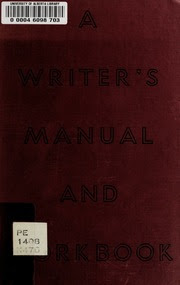
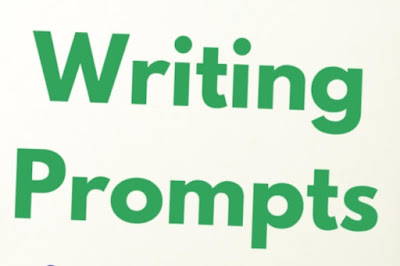


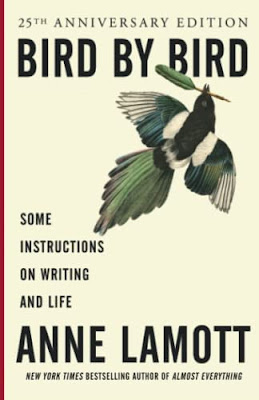
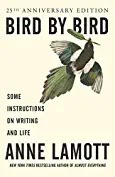
.jpg)
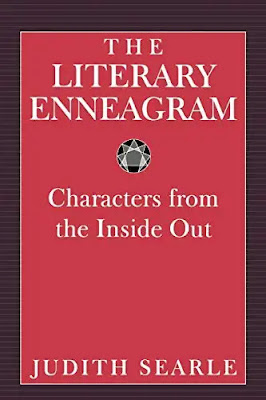
.jpg)